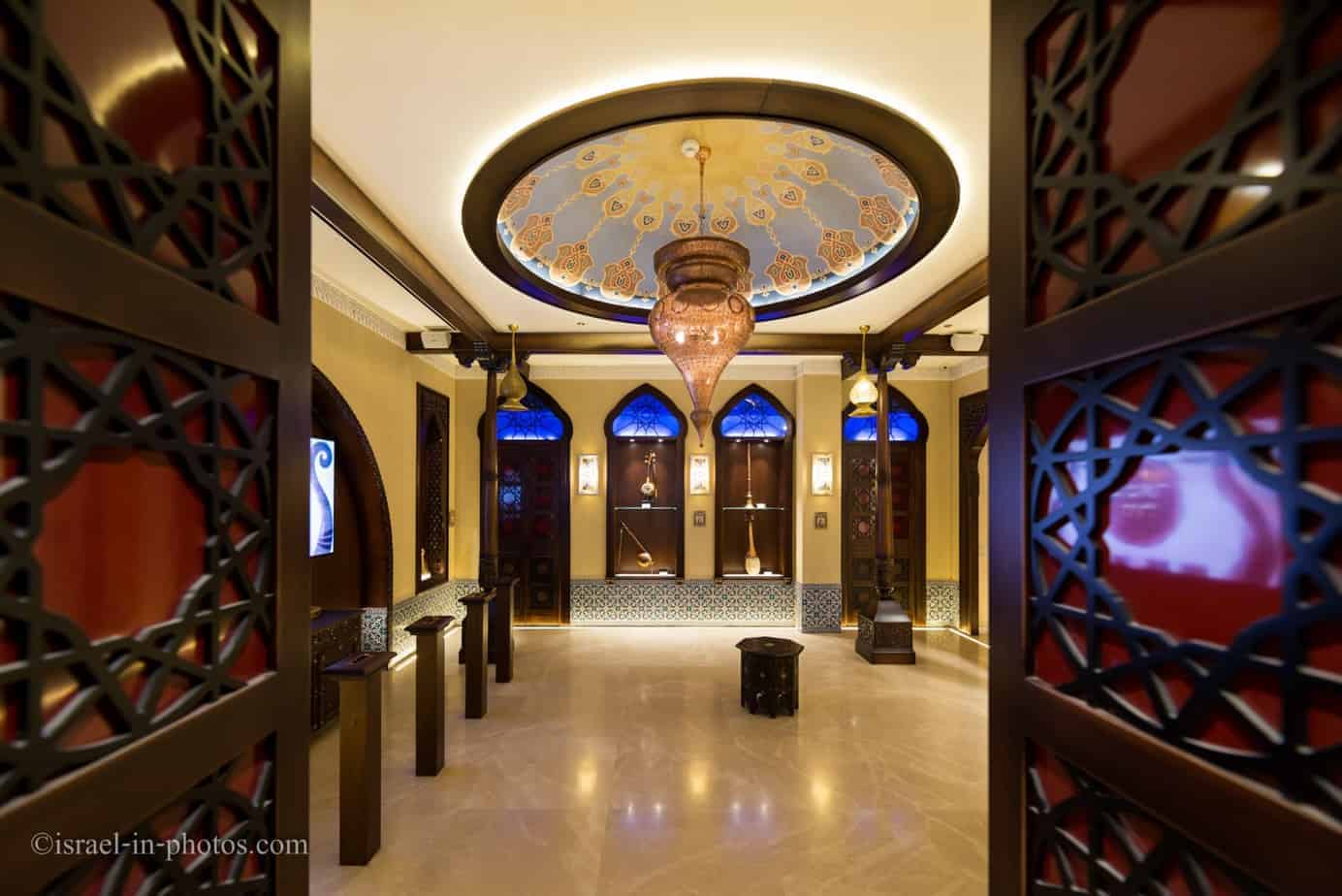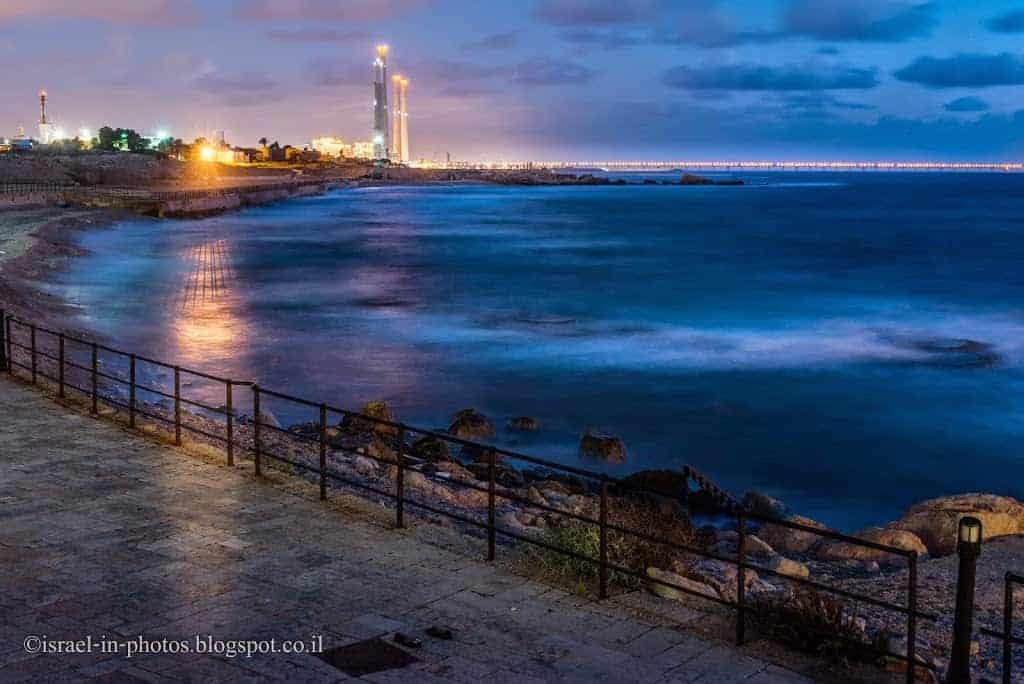Park Yakum and Poleg Gateway Nature Reserve – Visitors Guide
Park Yakum and Poleg Gateway Nature Reserve offer loop family hikes near Netanya. The tracks pass through nature and history.
Table of Contents
Map
Park Yakum and Poleg Gateway Nature Reserve are located by Kibbutz Yakum. The easiest way to get there is by entering “Park Yakum” into Waze. Alternatively, you can use the following GPS coordinates: (32.25738614438738, 34.83768870827915).
Directions for drivers: Link to Waze and Link to Google Maps
Directions for public transport: Link to Moovit
Interactive map of the area:
Entrance Fee
Free.
Parking
Free parking is available. See the tracks section to know which parking you need.
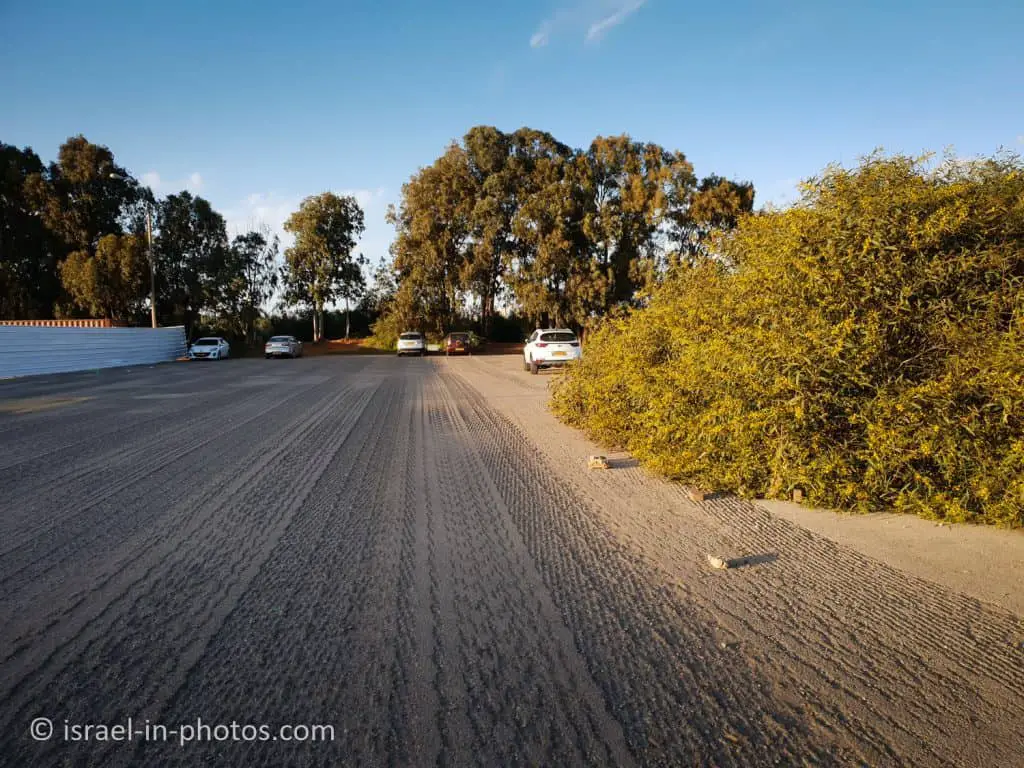
Opening Hours
You can visit this place anytime. But since there is no artificial light, you should visit during daylight.
Tracks
There are several popular trails at Park Yakum and Poleg Gateway Nature Reserve. Here is an interactive map from israelhiking.osm.org.il, where the trails are marked:
The length of both marked circular trails is about 2 km, including a total climb and descent of 30 meters. The difference between the trails is in the last section. While the blue trail leads you back to the pine grove, the red trail takes you to the abandoned event hall.
Our latest visit was in the middle of March 2021, and some construction work was on site. Some of the gates might be closed. Thus if it is your first time, prefer the blue trail (since it has no gates).
The marked trails include the core, and you can easily extend them. One option would be parking to the south, near the gas station at the entrance to Yakum. And then walking till the beginning of the black trail and incorporating the marked trails.
Another option for making the hike longer is going to the other side of road #2. You can use the black trail to reach Wingate Institute and continue towards the sea. Or you can use the Israeli national trail to reach the sea and Nahal Poleg Nature Reserve in Netanya.
Floods
We visited in the middle of March, and all the trails were dry. But if you visit during the winter or after heavy rains, parts of the trails can be flooded.
Cycling
Horses and bicycles are permitted on the red trail only (not the one I marked red). Also, starting a fire at this nature reserve is prohibited.
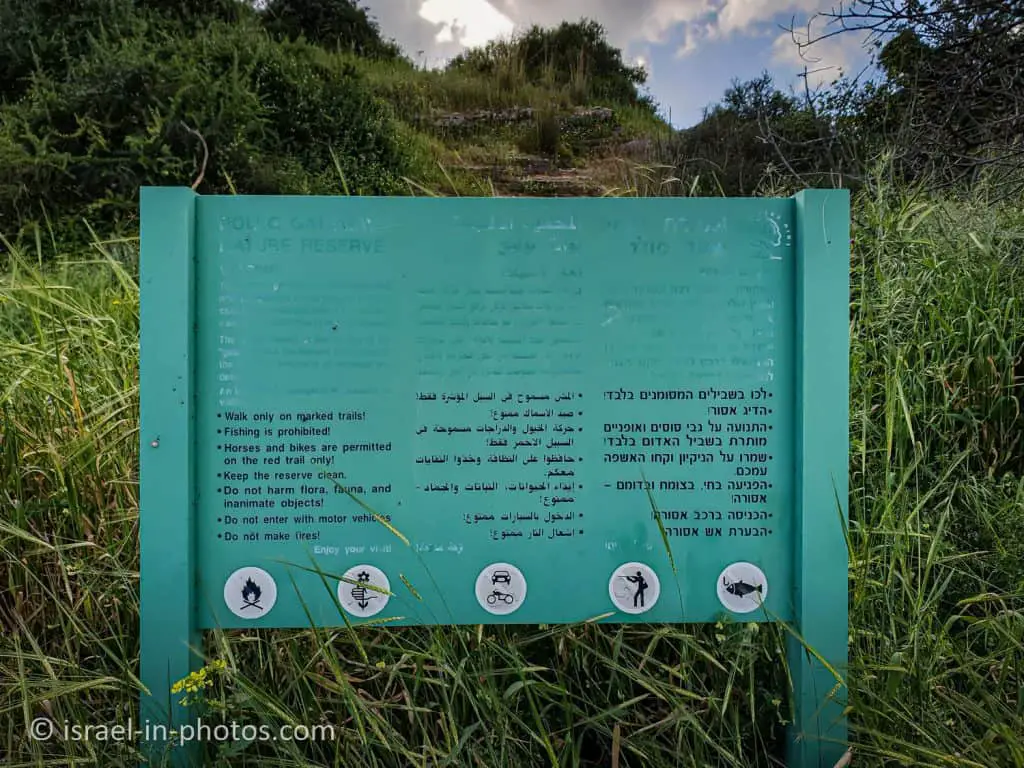
The Red Trail
At the parking, you can find two trails. Both of which connects to the red trail.
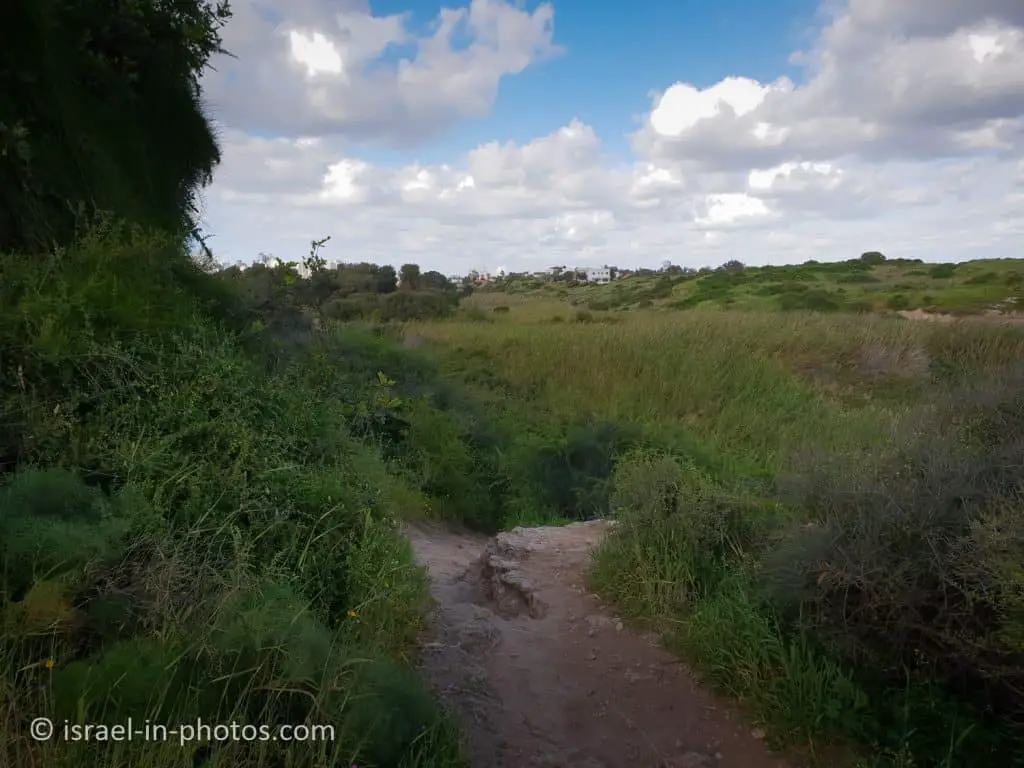

Most Poleg Gateway Nature Reserve trails are easy and suitable for families. But you can not use baby strollers.


The Grove of the Three
After a 10-minute walk, we reached the grove of the three. Members of Moshav Udim planted this grove in memory of three of their friends who fell here while defending Udim.
According to a sign on-site, though there are picnic tables at this grove, making bonfires and barbeques is prohibited.
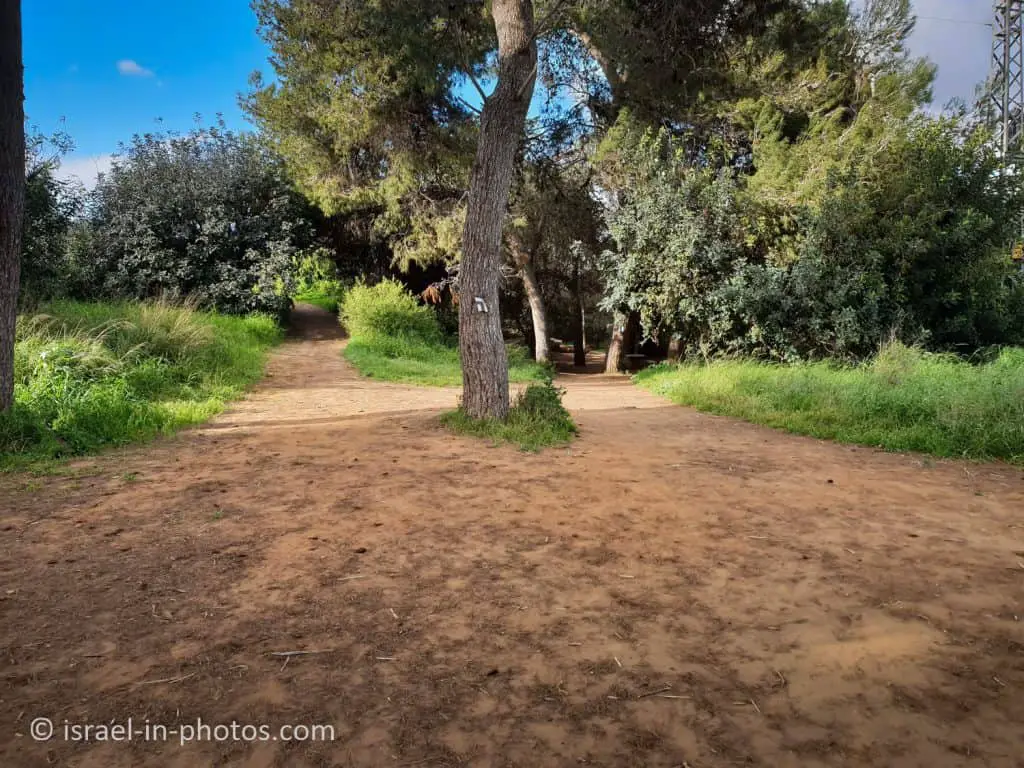
The grove is also the meeting point of the red, black, and Israeli national trails.

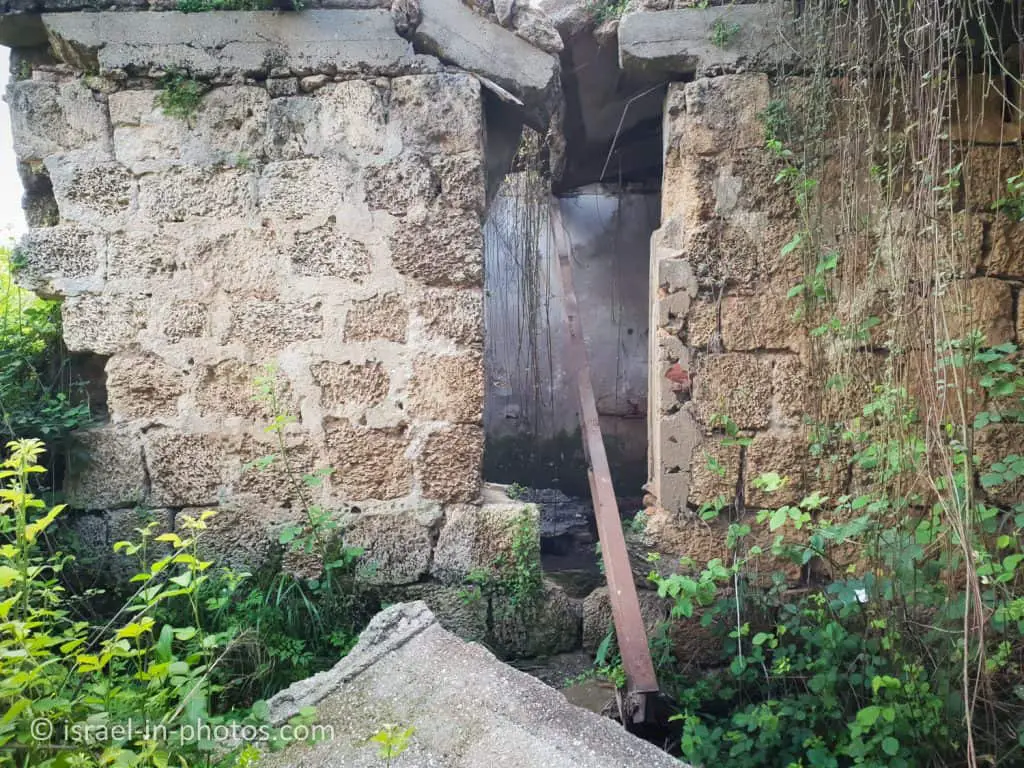
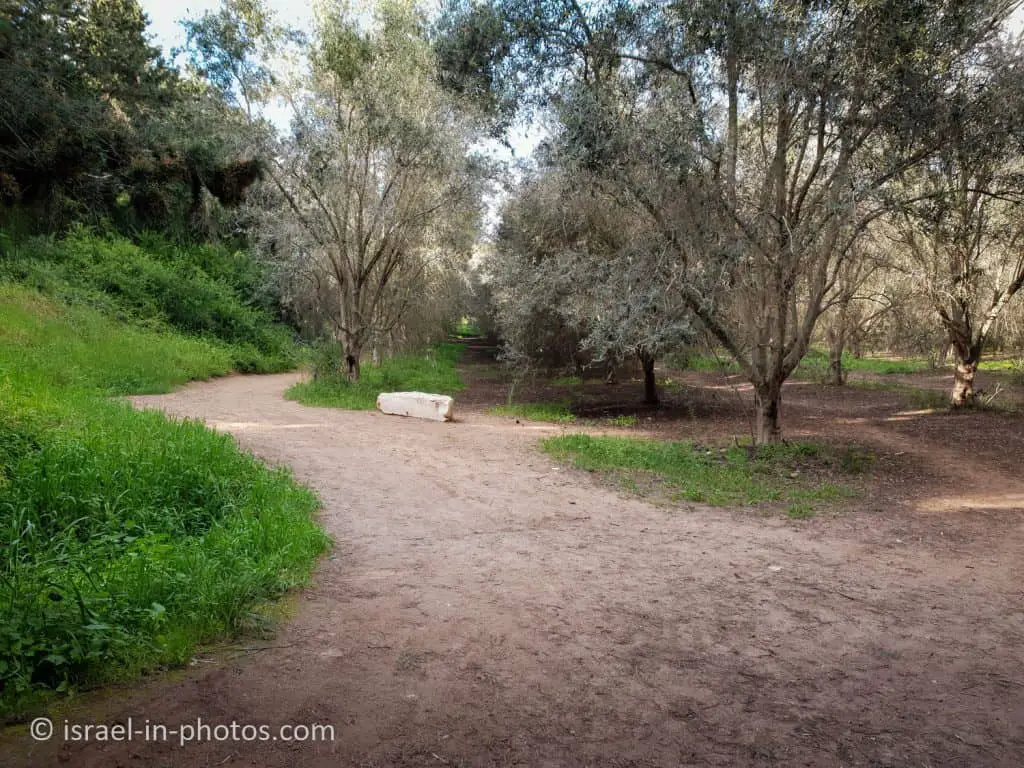
Using the black trail, we will head to the viewpoint from the grove. And this is the time to mention Poleg Stream.
What does Poleg mean?
You will notice a rock-hewn breach in the Kurkar ridge as you approach the viewpoint. And on both sides of this gap, there are viewpoints.
The breach in the mountain is called the Poleg Gate (the Roman gate). It was created to allow water flow and prevent the creation of marsh. And this breach is what gave Poleg Stream its name.
A short section of the Poleg River passes through the reserve. Nahal Poleg is one of the smallest of the coastal streams, beginning in the Hamra hills in the area of Tira. Arriving at the second kurkar ridge, the small stream encountered an impassable obstacle. Its channel has been shifted to the south of the ridge (through the present-day Lake Yakum area), and swamps have accumulated in the back of the ridge.
Nahal Poleg is a winter stream, yet in the area of the Poleg Gate, water flows in it all year round, originating from the high groundwater. Water from the stream is pumped to fill Yakum Lake (the lake is not within the reserve). The kurkar quarry east of Yakum Lake and east of the kurkar ridge have swampy areas, and water is collected in the winter.
The breach of Nahal Poleg gave it its name in three languages: the Crusaders called it the Split-rock river (Rothchilia). The Arabs called it Wadi Palik. In our generation, the name Nahal Poleg was determined in Hebrew, which preserves both the sound of the Arabic name and its meaning (splitting the Sharon region across).

Viewpoint
From this viewpoint, you can see the other side of the breach, Wingate Institute and Netanya.
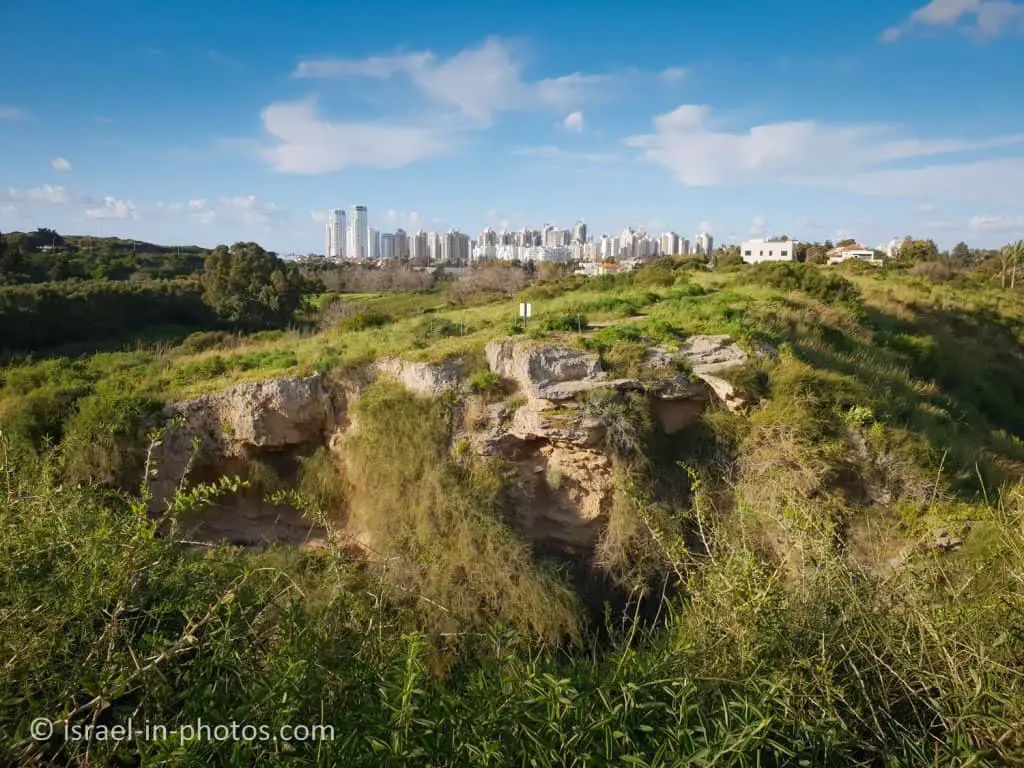


Israel National and black trails continue on the Kurkar ridge to the south. And since we are passing near Tel Poleg (located on the ridge to the west), let’s mention it.
Tel Poleg
Remains of the kurkar ridge in reserve show the remains of the Tel Poleg archeological site, although it was mostly destroyed by kurkar mining in the early 1950s. During the excavation seasons at the site in 1959 and 1964, a settlement from several periods was exposed.
The first settlement in the area was in the Middle Bronze Age II (about 3,800 years ago). At that time, the bend of Nahal Poleg around the kurkar ridge was used to build a fortress in about 12 dunams, and it was surrounded by a thick wall higher than clay bricks. A large brick tower was discovered in the southwest of the wall. And to the North of the citadel (the only weak point of the ancient settlement). A moat was probably hewn, and it was he who laid the foundations for a gap in the Poleg Gate. The ancient wall launches into the breach, so its quarrying is attributed to this period.
The ancient settlement did not last long, but settlement in the area was renewed in the Iron Age (3,000-2,900 years ago) and lasted intermittently until the Byzantine period. It is common to assume that the ancient moat at Poleg Gate was expanded in the Byzantine period. It was part of a drainage plant designed to cultivate the swampy areas east of the kurkar ridge. After a while, the moat closed. The swamps returned to their original extent and remained intact until the drainage works to dry up the Poleg River swamps during the British Mandate and later in the 1950s.

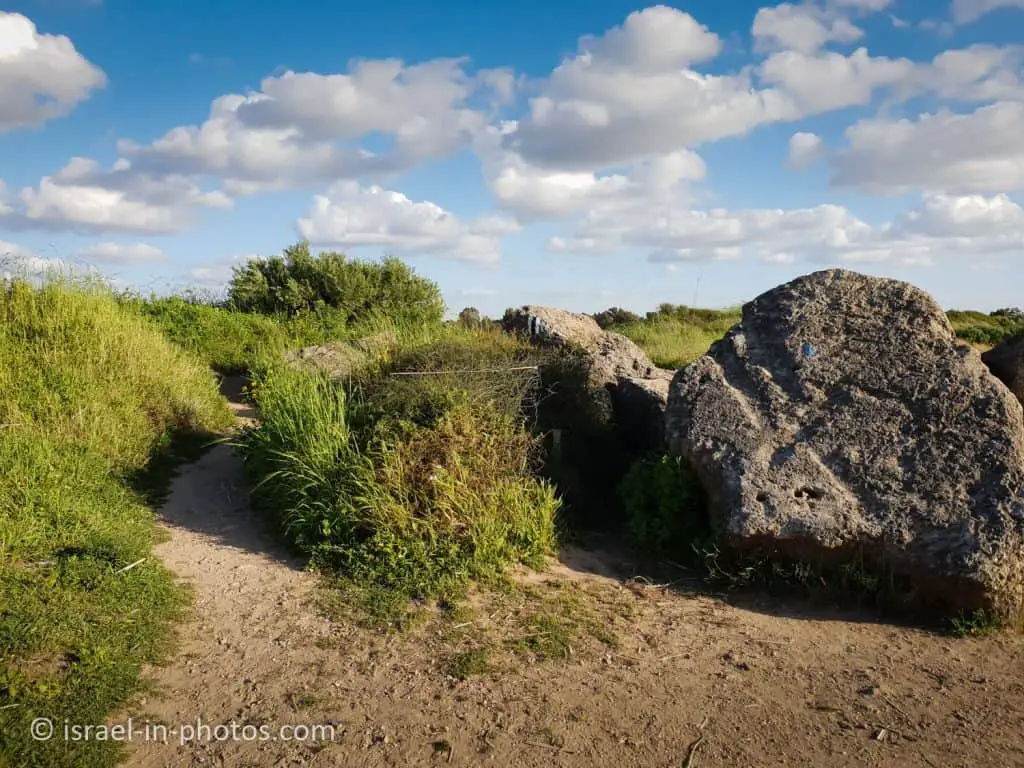
In the following image, you can see the blue trail in the valley below. And we can use it to return to the parking lot.
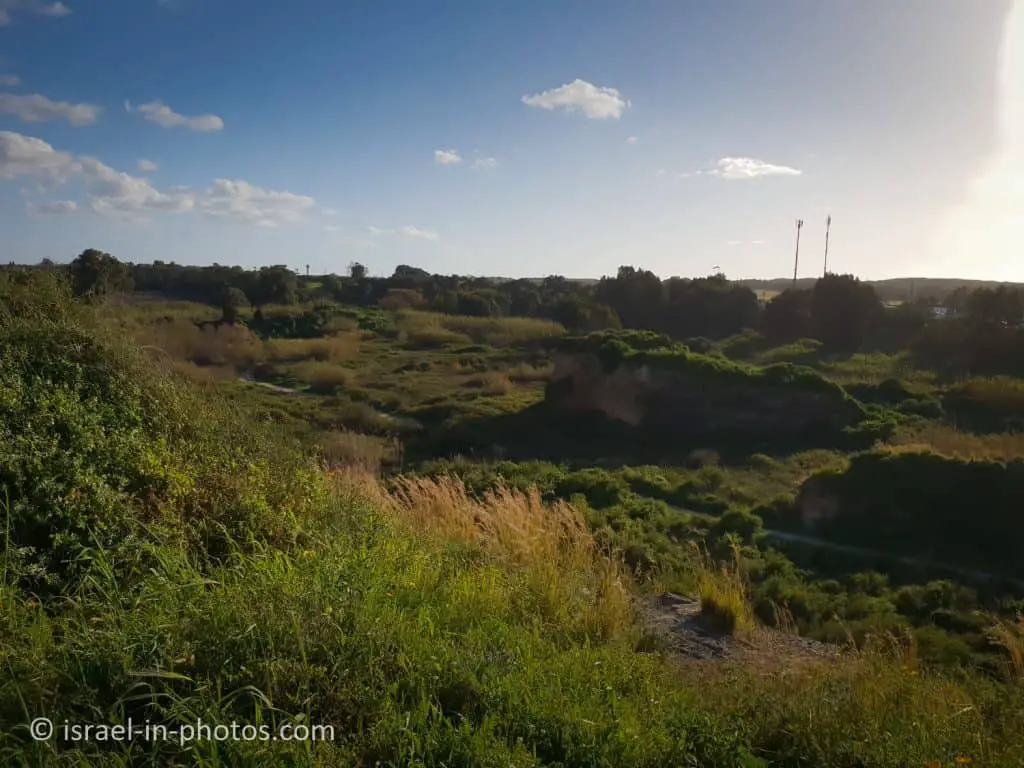

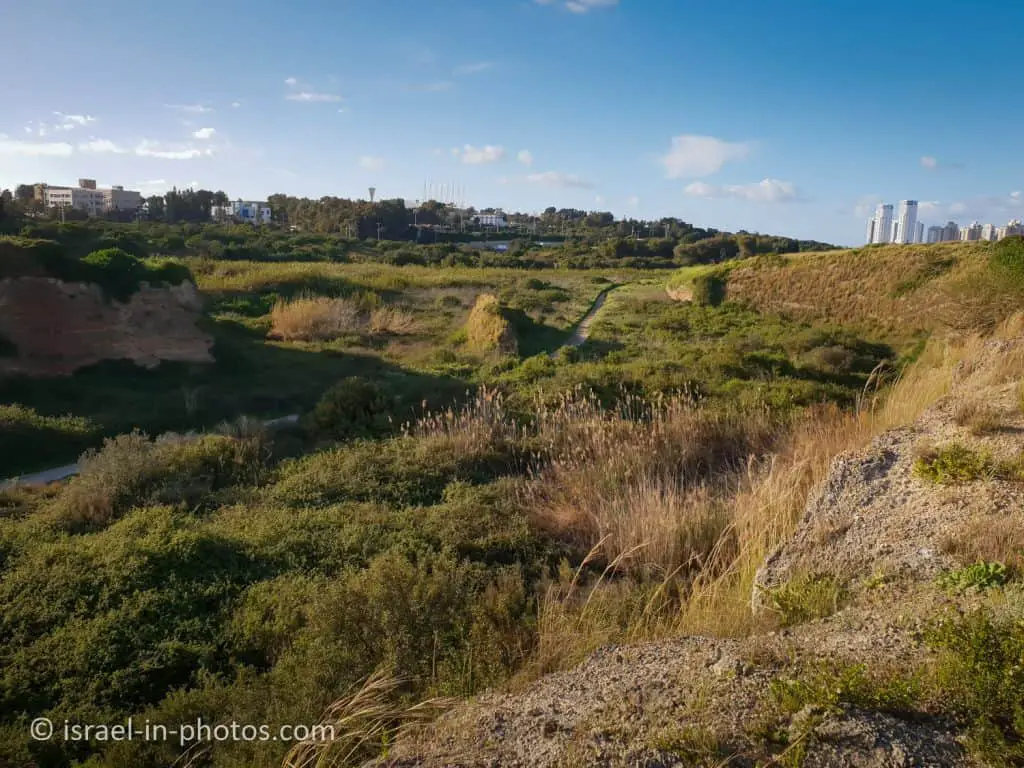
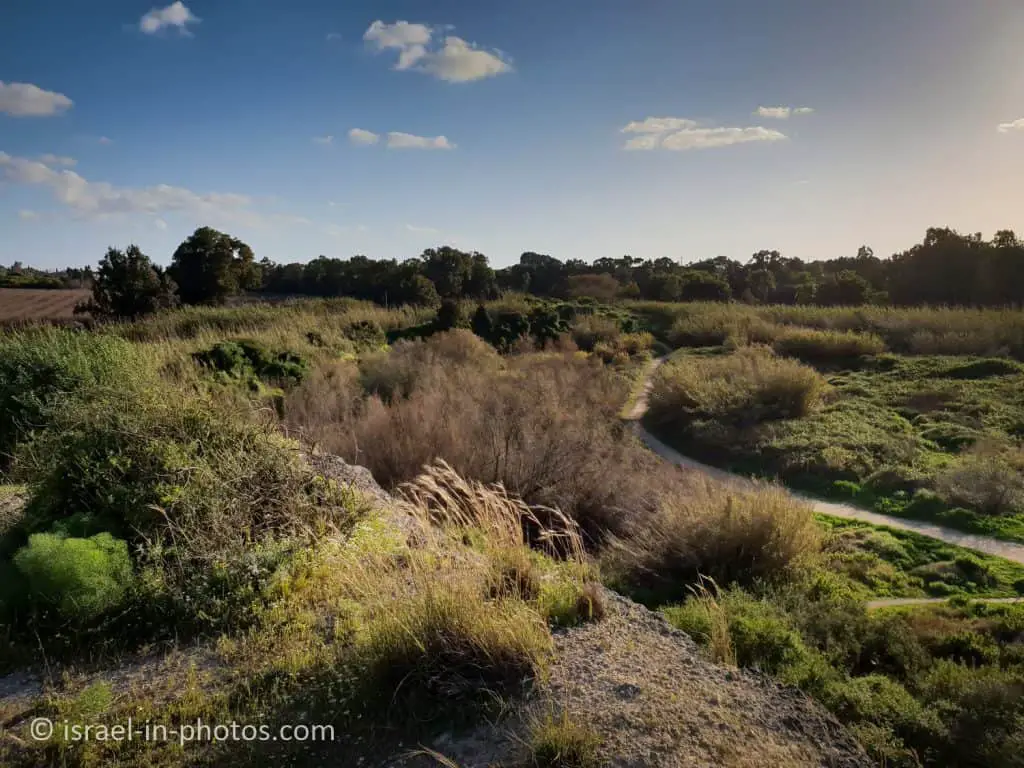

The black trail leads down, and you can either continue with it (red marking on the trail map above) or take the blue trail.

After several minutes on the black trail, we saw a small pond.

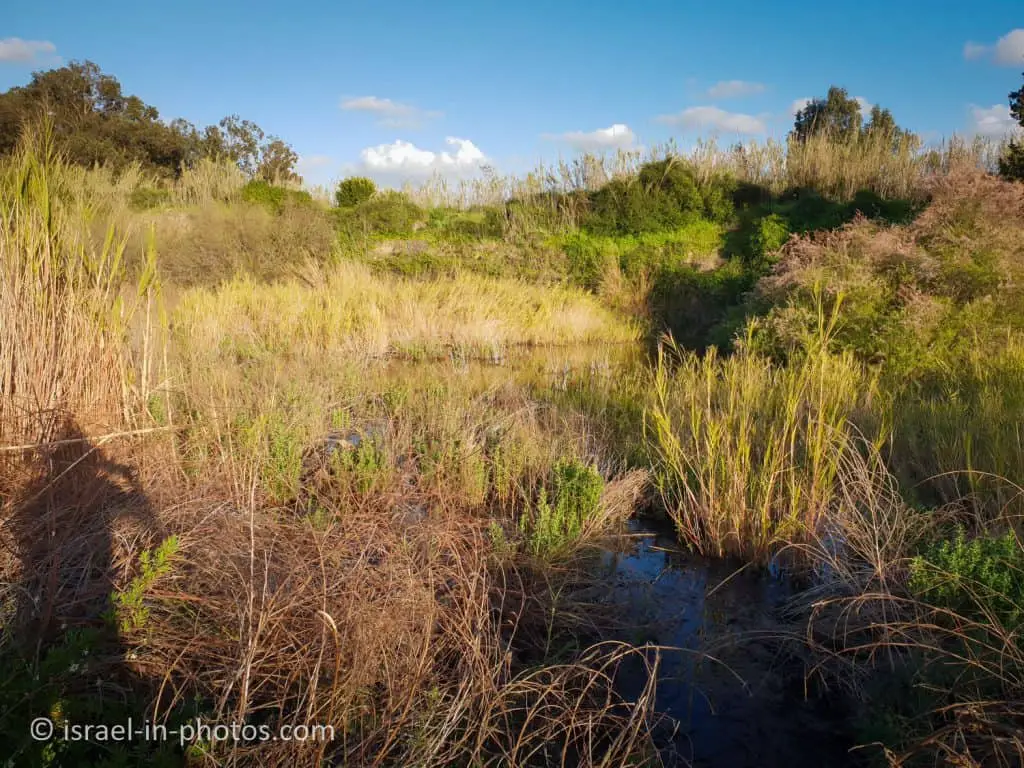
And within several minutes, we reached the Poleg Gateway Nature Reserve gate. And as we exited the gate and continued to the right, we saw an abandoned event hall.

The Lake-Park Yakum
The Lake at Park Yakum was an event hall. It was closed and abandoned a decade ago. Here are several photos from this complex.

You can find additional information about this event hall here.

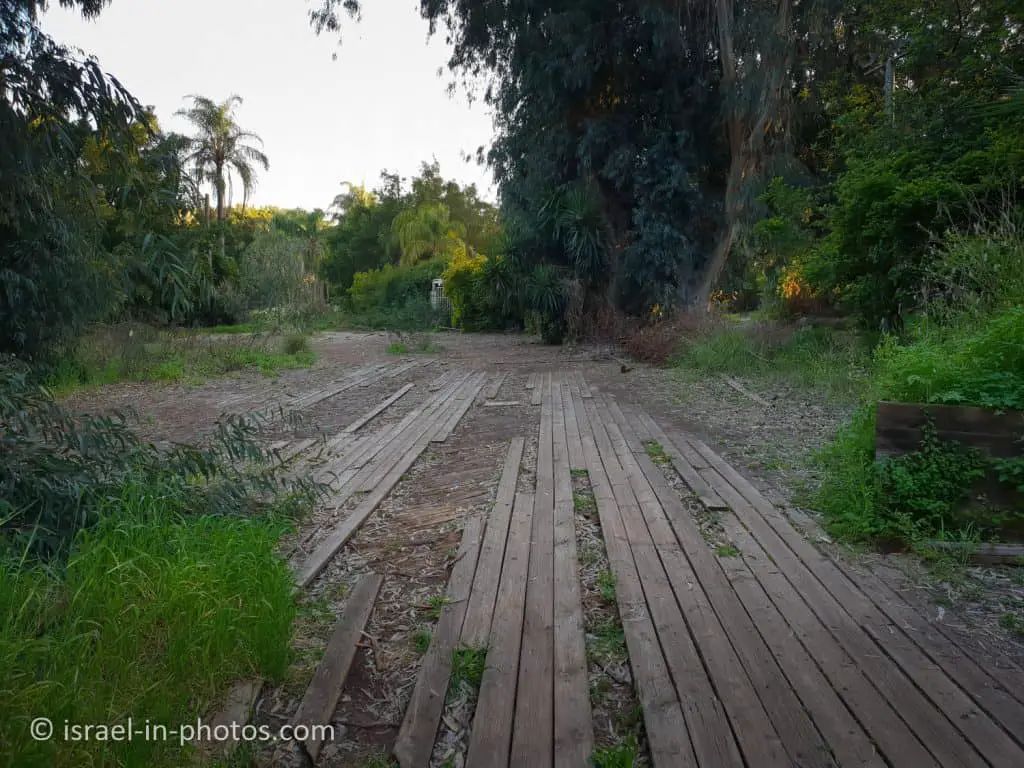
Summary
Park Yakum and Poleg Gateway Nature Reserve are perfect for family hikes. Moreover, it is close to the center and does not require a long drive (which can be problematic with small kids). The only downside I saw is that this place is not very clean.
Have you ever visited Park Yakum and Poleg Gateway Nature Reserve? Tell us about your experience in the comments below.
That’s all for today, and I’ll see you in future travels!
Stay Tuned!
Additional Resources
Here are several resources that I created to help travelers:- Trip Planner with Attractions and Itineraries is the page that will help you create your perfect travel route.
- What is the Best Time to visit Israel? To answer this question, we will consider the weather, prices, holidays, festivals, and more.
- Information and Tips for Tourists to Israel will answer the most common questions tourists have about Israel (including safety, passports, weather, currency, tipping, electricity, and much more).
- Israel National Parks and Nature Reserves include a complete list, top ten, map, tickets (Israel Pass, Matmon, combo), and campsites.
- If you are looking for things to do, here are the pages for Jerusalem, Tel Aviv, Haifa, Sea Of Galilee, Akko (Acre), Eilat, Nazareth, Safed (Tzfat), and Makhtesh Ramon.




